New Printable Worksheets and Lesson Activities. Page 8
Mathematics
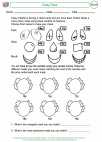
Measure and compare quantities using appropriate units, instruments and methods.
Solve addition, subtraction, multiplication and division problems using currency.
Worksheet Crazy FaceGrade 3
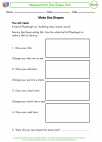
Measure and estimate lengths in standard units.
Measure the length of an object by selecting and using appropriate tools such as rulers, yardsticks, meter sticks, and measuring tapes.
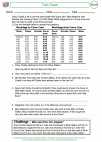
Measurement: Understand and apply appropriate units of measure, measurement techniques, and formulas to determine measurements.
Compute elapsed time to the minute.
Activity Lesson Train TravelGrade 4
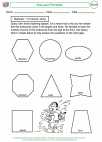
Geometric measurement: recognize perimeter as an attribute of plane figures and distinguish between linear and area measures.
Solve real-world and mathematical problems involving perimeters of polygons, including finding the perimeter given the side lengths, finding an unknown side length, and exhibiting rectangles with the same perimeter and different areas or with the same area and different perimeters.
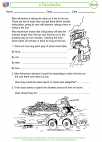
Use place value understanding and properties of operations to perform multi-digit arithmetic. (A range of algorithms may be used.)
Fluently add and subtract within 1000 using strategies and algorithms based on place value, properties of operations, and/or the relationship between addition and subtraction.
Worksheet A Trip to the ZooGrade 3
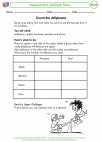
Measure and estimate lengths in standard units.
Measure the length of an object by selecting and using appropriate tools such as rulers, yardsticks, meter sticks, and measuring tapes.
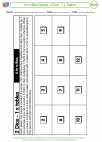
Multiply and divide within 100.
Fluently multiply and divide within 100, using strategies such as the relationship between multiplication and division (e.g., knowing that 8 × 5 = 40, one knows 40 ÷ 5 = 8) or properties of operations. By the end of Grade 3, know from memory all products of two one-digit numbers.

Measure and compare quantities using appropriate units, instruments and methods.
Measure units of time using appropriate instruments (e.g., calendars, clocks, watches - both analog and digital).
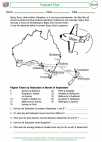
Represent and interpret data.
Explain the classification of data from real-world problems shown in graphical representations including the use of terms range and mode with a given set of data. (L)
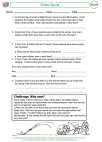
Measure and compare quantities using appropriate units, instruments and methods.
Solve addition, subtraction, multiplication and division problems using currency.
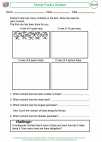
Use place value understanding and properties of operations to perform multi-digit arithmetic. (A range of algorithms may be used.)
Fluently add and subtract within 1000 using strategies and algorithms based on place value, properties of operations, and/or the relationship between addition and subtraction.
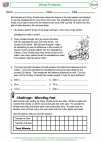
Represent and interpret data.
Draw a scaled picture graph and a scaled bar graph to represent a data set with several categories. Solve one- and two-step “how many more” and “how many less” problems using information presented in scaled bar graphs.
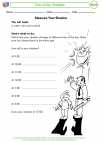
Measure and compare quantities using appropriate units, instruments and methods.
Measure units of time using appropriate instruments (e.g., calendars, clocks, watches - both analog and digital).
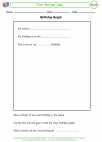
Measure and compare quantities using appropriate units, instruments and methods.
Measure units of time using appropriate instruments (e.g., calendars, clocks, watches - both analog and digital).

Measure and estimate lengths in standard units.
Measure the length of an object by selecting and using appropriate tools such as rulers, yardsticks, meter sticks, and measuring tapes.
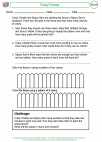
Use place value understanding and properties of operations to perform multi-digit arithmetic. (A range of algorithms may be used.)
Fluently add and subtract within 1000 using strategies and algorithms based on place value, properties of operations, and/or the relationship between addition and subtraction.
Worksheet Fancy FencesGrade 3
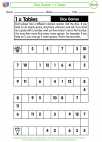
Multiply and divide within 100.
Fluently multiply and divide within 100, using strategies such as the relationship between multiplication and division (e.g., knowing that 8 × 5 = 40, one knows 40 ÷ 5 = 8) or properties of operations. By the end of Grade 3, know from memory all products of two one-digit numbers.
Activity Lesson Dice GamesGrade 3
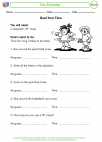
Measure and compare quantities using appropriate units, instruments and methods.
Measure units of time using appropriate instruments (e.g., calendars, clocks, watches - both analog and digital).
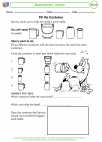
Measure and estimate lengths in standard units.
Measure the length of an object by selecting and using appropriate tools such as rulers, yardsticks, meter sticks, and measuring tapes.
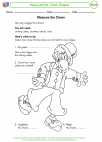
Measure and estimate lengths in standard units.
Measure the length of an object by selecting and using appropriate tools such as rulers, yardsticks, meter sticks, and measuring tapes.